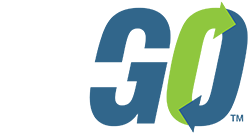Enhancing Business Operations with Human Capital Management

In today’s fast-paced business world, the efficient management of human capital is vital to an organization’s success. Human capital management (HCM) plays a significant role in streamlining operations, improving efficiency, and ultimately enhancing the bottom line.
Breaking Down Human Capital Management
HCM encompasses all aspects of an organization’s interaction with its employees. A holistic look at HCM requires strategy and processes, as well as the technology in place to drive those strategies and processes. HCM covers a wide spectrum of functions. This includes talent management, learning and development, performance evaluation, benefits administration, compliance, recruitment, timekeeping, and payroll, to name just a few. To truly embrace HCM, all these elements must work in harmony, creating a seamless, integrated system.
One of the challenges faced by organizations, especially small businesses, is the fragmentation of software solutions. Many rely on multiple software tools to manage different HR functions, from timekeeping to payroll, creating inefficiencies and potential errors. An effective HCM system offers an integrated solution that covers the entire employee lifecycle, ensuring a smoother and more efficient HR process. This not only saves time but also reduces the likelihood of errors, thereby enhancing compliance.
Strategic Human Capital Management
Technology alone is not the answer to HCM. The strategic aspect is equally important. Small business owners must align their culture with the goals of their workforce. For instance, attracting tech-savvy employees might require offering flexible work schedules, while younger employees may be enticed by a student loan repayment benefit. An employee-centric culture and a tailor-made benefits package are crucial for retaining and attracting the right talent.
In addition to benefits, the onboarding process is an essential part of creating a positive employee experience. An outdated, paper-based onboarding process can be a significant turn-off for tech-savvy candidates. Implementing a modern, digital onboarding process can make a significant difference in attracting and retaining top talent.
Streamlining HCM Processes
HR professionals often find themselves overwhelmed with a plethora of tasks, leaving little time for strategic initiatives. Cumbersome processes, such as manual timecard approvals, can be a massive drain on resources. For example, manually handling timecards for 300 employees can consume hours of staff time and lead to errors. Adopting an HCM system that allows employees to clock in and out digitally can save substantial time and resources, freeing HR staff to focus on more valuable tasks.
In addition, HCM software streamlines open enrollment, making it more efficient and user-friendly. Traditional open enrollment processes are time-consuming, with extensive paperwork, data entry, and distribution of forms. An HCM system simplifies this process by offering remote access, time savings, and increased security. Employees can review benefits and make selections online, significantly reducing the manual work associated with open enrollment.
The Benefits of HCM Systems
Implementing an HCM system brings numerous benefits to your organization:
Time Savings: HCM systems save substantial time, allowing HR teams to focus on strategic projects and value-adding tasks.
Fewer Mistakes: Automation reduces the chances of human errors associated with manual data entry and processing.
Less Paper: Going digital not only saves money but also aligns with environmental goals, attracting employees passionate about sustainability.
Better Decision-Making: Enhanced access to data empowers management to make informed decisions quickly.
Happier Employees: Streamlined processes and user-friendly interfaces improve employee satisfaction and engagement.
Increased ROI: HCM systems can decrease the time and personnel spent on manual processes making the HCM system a good investment.
In conclusion, HCM is not just about technology; it’s a holistic approach that aligns your organization’s culture, benefits, and processes with the needs and expectations of your workforce. Embracing HCM systems and strategies can lead to greater efficiency, improved employee engagement, and ultimately, a stronger bottom line.
For more information and to begin the conversation, visit Workforce Go!’s HCM page.
